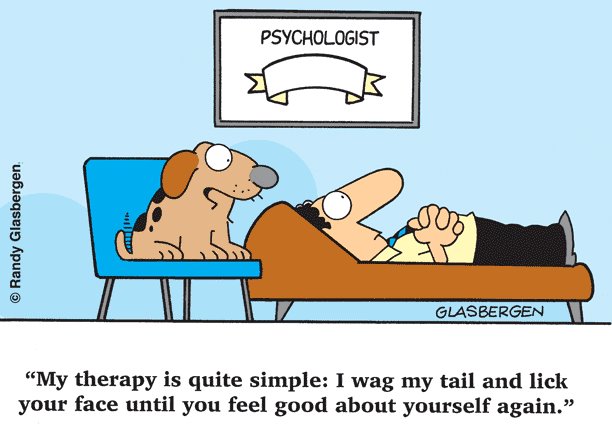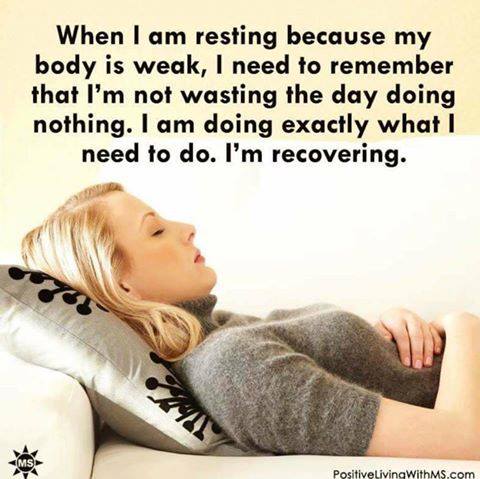7 Ways to Manage the 'Bad' Days With Fibromyalgia
 I have fibromyalgia as my body’s default setting. I know, almost before I get out of bed (and gravity sets back in) whether my day is going to be “good” or “bad.” Good days are the days when I can do most of what I’d like to, with a “normal” level of pain.
I have fibromyalgia as my body’s default setting. I know, almost before I get out of bed (and gravity sets back in) whether my day is going to be “good” or “bad.” Good days are the days when I can do most of what I’d like to, with a “normal” level of pain.
- What is Fibromyalgia?
- What Are Common Fibromyalgia Symptoms?
Wait, let me start over. I have fibromyalgia as a major diagnosis. But on top of that we have to add degenerative osteoarthritis in my spine, which has its own share of good and bad days. I have other trifling things going on, but the fibro is the conductor of this body train. Which means that when other illnesses kick up their heels, the fibro jumps right in with them. In the long run, just about anything can cause the fibro to flare. “Good days” is a very subjective term – and more defined by being “not bad” than by being actually “good,” in the usual sense. So there we are.
I have far too many “bad” days, days when I cannot do much of what I’d like to – and nothing of what needs to be done. Needless to say, I have worked out a fairly comprehensive list of activities that can be done even when I am wandering about in a “fibro fog” — which helps me get through the day and feel like I have done something more than just nothing.
1. Have a routine for the start of your day. I have recently begun a specific morning schedule, with activities which I modify/skip as necessary to match that day’s abilities. I’m not saying you have to use my list, but I would suggest that you have some kind of morning routine, something you can do most days. (And no guilt if you cannot manage it. You know what your body can do on any given day.)
Here is my daily routine:
- Wake up. (An important part of any schedule!)
- Some small, easily accomplished task, which will help set a positive tone for the day. (You could make your bed; I don’t. I subscribe to the theory that you need to leave it “open” to let the bedding air out. So my small chore may be to fill the water pitcher I use all day long.)
- Take my medications. Without them, nothing happens.
- Meditate/pray. Your choice; if neither, than just sit quietly for a few minutes while thinking of the good things in your life.
- Journal/diary. I am using a program called Smart Diary Suite (free download from download.com) that has a place to keep a diary, as well as a calendar and a task list. Each day I create a page in my diary: first, I record an idea of how I am feeling. Then I write about the things that are swirling around in my head – things that frustrate me, things that are happening, etc. Then I skip a couple of lines and write my…
- Gratitude: being thankful and listing specific examples – and it doesn’t always have to be people. It can be important or unimportant. The small things in life add up, you know. Again, once done I skip a couple of lines and move on to the…
- Affirmation and intention: identifying a positive thing about yourself (and writing it down). It doesn’t have to be a grand, amazing thing. It might be, but it’s also perfectly acceptable to choose a small habit or a single instance of a positive thing you did. Then, write down your goal for the day – and I mean your personal behavior goal; this includes such things as being kinder, getting touch with loved ones, etc.
- “To do” tasks: a list, no more than about three, of things you’d like to accomplish. Not necessarily today, but things that you want to do as you are able. I have several “daily” tasks (that I may not always do) on my list to keep me reminded of them, but I also have what I call “one time” things that need to be done once and are done. That could be organizing your medicines, finding a new recipe for a dish you’d like to make or making a phone call to a specific person. (I use the Task part of the Smart Diary Suite for this. Makes it more official than on a scrap of paper so easily lost.)
- Do what you can from your task list; the first three hours I am up is the time I am most energized.
Trust me, I skip what I cannot do, but I try to always do as many steps as I can manage on any given day. (This list is inspired from a blog post by Benjamin Foley).
2. Read. I have a Kindle, but I tend to do more reading on the computer version. I’m already on the computer – it’s my major diversion/entertainment/information source. I also have books from some of the free book sites that I have downloaded. I am currently making my way through the works of Agatha Christie. There are also sites that will let you read for free online, no download necessary.
3. Create. I have re-discovered crocheting and I’m churning out scarves. (Small item, easily finished and not nearly as thought-intensive as an afghan.) I also use “Fresh Paint” (Windows 10 program) to “oil paint.” I write — two blogs, discussions online and for my own amusement. I spend a lot of time putting puzzles together – on the computer. Microsoft Windows has its own version of a puzzle program, but I am using “Magic Jigsaw” which is a free download from the Google store (Apple probably has it, I haven’t checked).
Whatever you can do, then do. Each and every person has some sort of creative urge that will come out. Like to cook, but can’t always do it? Try writing recipes for those times when you can – or for someone else to cook for you. Want to write, but lack the manual dexterity to do so? Use the “Voice Recorder” feature of Windows, take the time to “teach” it how you speak and then…tell your story.
4. Be social. Obviously, this is one that must be done within the boundaries of how you’re doing. Find a social medium online that you enjoy. I use Facebook and have made many friends there. I even belong to a couple of “groups.” Join a site that offers discussion forums for its members, maybe a site related to your illness – or a site that is for mothers or veterans or whatever other adjective you use to describe yourself. Make phone calls as you can handle them. If you have family or friends that live some distance away, meet them on Skype. (Or any of the other video message platforms.) If you are up to it, have visitors, arming them with the knowledge that you may need to send them home so you can rest. I wouldn’t suggest going out on a bad day…and you may want to cancel any appointments you can.
5. Eat nutritionally. Some days you may not feel like eating anything. OK, but do try to take in some sort of nutrition so that your body has energy to keep itself running and maybe even do some minor repair work. Eat small amounts throughout the day so that you don’t skip a meal and then are so hungry that you eat whatever’s closest, nutritious or not. If you can afford it, I recommend going completely organic and farm-fresh. I always describe organic food as “tasting the way your brain thinks it should.” If your budget doesn’t permit that large a change, then at least buy the best quality food that you can – which generally means not in boxes or bags and not pre-made. If you need prepared food, try to get the best quality there, with a minimum of “garbage” chemicals, extenders, stabilizers and so on. You are most definitely what you eat.
 6. Go out into nature. If you can get out of the house, even if it’s no further than the front porch or the sidewalk…make the effort. If you can’t get out (and the weather allows), open up the house and “change” the air; look at pictures or videos of nature that will let you reconnect with Earth. If you have a pet, you have a piece of nature that will sit on your lap – or at least next to you. Be mindful of the act of petting them, of interacting with them, so you can find that connection to Nature.
6. Go out into nature. If you can get out of the house, even if it’s no further than the front porch or the sidewalk…make the effort. If you can’t get out (and the weather allows), open up the house and “change” the air; look at pictures or videos of nature that will let you reconnect with Earth. If you have a pet, you have a piece of nature that will sit on your lap – or at least next to you. Be mindful of the act of petting them, of interacting with them, so you can find that connection to Nature.
7. Be kind to yourself. Acknowledge the limitations a bad day sets and work around them – or go to bed, if that’s what it takes to be kind to your body and mind. Don’t try to struggle past it; allow yourself to know that we all get bad days…and that life goes on and the good days will come again. Don’t focus on just how bad it is because that sets your brain up to repeat that feeling over and over until it’s a (bad) habit.
 Be as kind to yourself as you would be to another person who is feeling bad. Do whatever it takes to have that self-kindness, the compassion for your own being. Your body is your vehicle through time and space, and not everyone has a $40,000 Lamborghini. It doesn’t matter what your make and model is, or even if it is in pristine condition (or not, mostly not). It only matters that you care for the vehicle you have as best as you can, for as long as you can.
Be as kind to yourself as you would be to another person who is feeling bad. Do whatever it takes to have that self-kindness, the compassion for your own being. Your body is your vehicle through time and space, and not everyone has a $40,000 Lamborghini. It doesn’t matter what your make and model is, or even if it is in pristine condition (or not, mostly not). It only matters that you care for the vehicle you have as best as you can, for as long as you can.
A bad day is only a single day out of all your days. Even more than one bad day is still just a day (each time). Like AA teaches its folks: measure out your time in whatever amount that will get you through to the “other side” – be it a day, an hour, a minute. You can only live one moment at a time. Every new minute always brings the possibility of change. So if you’re having a bad day, accommodate it as you must, but don’t think that’s all there is. Even bad days have their moments of good. You just have to be watching to see them.
We want to hear your story. Become a Mighty contributor here.
Image via Thinkstock.

